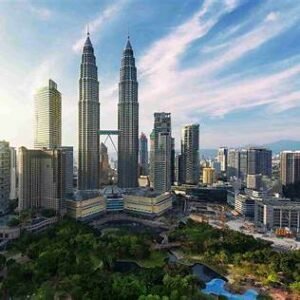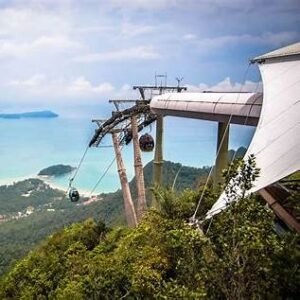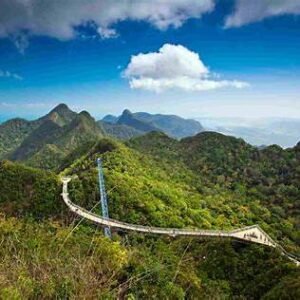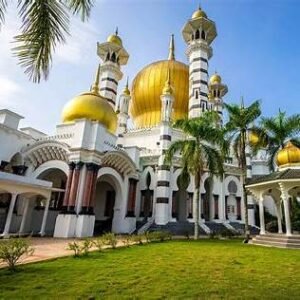The first time I landed in Kuala Lumpur, I was struck by the collision of worlds: skyscrapers rising like glass mountains, the smell of nasi lemak drifting from street stalls, and the sudden stillness when I stumbled into a Chinese temple glowing with lanterns. It was then I realized that the best places to visit in Malaysia are not just the famous towers and beaches, but hidden corners where nature, history, and culture live side by side.
Malaysia is more than a travel destination — it is a palimpsest. From the rainforests of Borneo to the colonial streets of Malacca, from the highland tea plantations to modern mosques, each site adds a line to the country’s ongoing story. For first-time and seasoned travelers alike, the best places to visit in Malaysia open a window into Southeast Asia’s extraordinary diversity.
Why Malaysia Captures Travelers’ Hearts
Malaysia is unique in its cultural blend: Malay, Chinese, Indian, and indigenous communities co-exist, shaping food, architecture, language, and art. Few countries in Asia present such an intricate mix of traditions. Add to this geography — islands, highlands, rainforests, and futuristic cities — and you have a destination that feels like multiple countries woven into one.
Traveling through the best places to visit in Malaysia is not only a visual experience but a scholarly one. Each stop reveals insights into colonial legacies, ecological preservation, religious coexistence, and modern development. For researchers, Malaysia is a living case study in multiculturalism and biodiversity. For travelers, it is a story waiting to be walked.
Kuala Lumpur and Selangor: Where Modernity Meets Tradition
Kuala Lumpur: Towers, Temples, and Time
Malaysia’s capital, Kuala Lumpur (KL), is a city of layers. The Petronas Twin Towers, once the tallest buildings in the world, symbolize Malaysia’s modern ambition. Yet just steps away, you find the Sri Mahamariamman Temple, the city’s oldest Hindu shrine, alive with incense and murals.
Highlights for first-time visitors:
-
Petronas Twin Towers — for skyline views and a sense of Malaysia’s global identity.
-
Batu Caves — a Hindu pilgrimage site with rainbow-colored steps and a massive golden Murugan statue.
-
Jalan Alor Night Market — where the heart of KL beats in satay skewers, char kway teow, and durian stalls.
Kuala Lumpur exemplifies the best places to visit in Malaysia because it is a crossroads — Islamic mosques stand near Chinese clan houses and colonial architecture shadows futuristic malls.
Batu Caves: Myth and Limestone
In Selangor, just outside KL, Batu Caves rise like a limestone cathedral. Dedicated to Lord Murugan, they are both sacred pilgrimage site and geological wonder. Every year during Thaipusam festival, devotees pierce their skin with hooks and carry kavadis up the 272 steps, embodying faith in visible form.
Beyond its religious aura, Batu Caves also reveal Malaysia’s ancient limestone geology. Visiting the dark cave chambers, filled with stalactites, makes one aware of the deep time beneath urban Malaysia.
Central and Western Peninsular Malaysia: Heritage and Highlands
Malacca (Melaka): A Living History Book
If you want to feel Malaysia’s layered past, Malacca is essential. Once a bustling port that linked Asia to Europe, it was ruled successively by Portuguese, Dutch, and British empires. Today, it’s a UNESCO World Heritage city.
Key highlights:
-
A Famosa Fort — remnants of the 16th-century Portuguese stronghold.
-
St. Paul’s Hill — overlooking the straits with ruins of a church where St. Francis Xavier once preached.
-
Jonker Street — vibrant with antique shops, Chinese temples, and street food.
Malacca is one of the best places to visit in Malaysia because it embodies how cultures layer over centuries. Scholars studying colonial trade routes often look here as a microcosm of globalization before the modern era.
Penang: Food Capital and Cultural Gem
Penang is Malaysia’s food heaven, and its capital George Town is another UNESCO site. Walking its streets, you’ll find British colonial buildings, Chinese clan houses, Hindu temples, and Islamic mosques within a few blocks.
Experiences not to miss:
-
Street Art of George Town — murals and iron sculptures narrating everyday life.
-
Kek Lok Si Temple — one of Southeast Asia’s largest Buddhist temples.
-
Penang Hill — for panoramic views and a cooler escape.
Penang’s multicultural cuisine — char kway teow, laksa, roti canai — makes it not only one of the best places to visit in Malaysia but also a global culinary destination.
Cameron Highlands: Tea Among the Clouds
In the highlands north of KL, the Cameron Highlands offer tea plantations rolling like green carpets, misty trails, and Tudor-style inns. Developed during British rule as a hill station, it remains a retreat from the tropical heat.
Activities include:
-
Visiting Boh Tea Plantation for scenic views and fresh brews.
-
Exploring mossy forests with their unique ecosystems.
-
Strawberry picking at local farms.
For environmental researchers, the Cameron Highlands provide a case study in both sustainable agriculture and ecological challenges posed by tourism.
Eastern Malaysia (Borneo): Rainforests and Indigenous Cultures
Sabah: Mount Kinabalu and Wildlife
On the island of Borneo, Sabah is dominated by Mount Kinabalu, Southeast Asia’s highest peak. Climbing its summit at dawn is both a physical challenge and a spiritual encounter, as mist parts to reveal endless jungle below.
Other highlights:
-
Kinabalu Park — a UNESCO site rich in endemic plant species.
-
Sepilok Orangutan Rehabilitation Centre — where orphaned orangutans are rehabilitated into the wild.
-
Sipadan Island — one of the world’s top dive sites with turtles, sharks, and pristine coral.
Sabah is among the best places to visit in Malaysia for those seeking raw nature. It also raises questions for researchers about conservation, indigenous rights, and eco-tourism.
Sarawak: Caves and Tribal Heritage
Sarawak, another Bornean state, is known for vast caves and indigenous heritage.
-
Mulu Caves National Park — home to the world’s largest cave chamber and spectacular bat exodus.
-
Sarawak Cultural Village — an open-air museum showcasing longhouses of Iban, Bidayuh, and other groups.
-
Kuching — a laid-back city where colonial architecture meets riverside charm.
Exploring Sarawak allows travelers to connect with Malaysia’s indigenous communities and understand traditions that predate colonial history.
Coastal Paradises: Islands and Beaches
Langkawi: Myth and Luxury
The Langkawi archipelago is famed for beaches, waterfalls, and myths of cursed maidens and warriors. Visitors can enjoy both luxury resorts and natural wonders like the Langkawi Sky Bridge.
Perhentian Islands: Backpacker Bliss
For travelers seeking turquoise waters and coral reefs, the Perhentian Islands are ideal. Snorkeling with turtles and sharks, lounging in beach huts, and joining bonfire parties define the experience.
Tioman Island: Hidden Rainforest Treasure
Tioman Island offers diving, trekking, and waterfalls wrapped in rainforest. Its biodiversity has drawn both tourists and scientists studying marine conservation.
Practical Tips for Exploring Malaysia
-
Transport: Malaysia has efficient buses, domestic flights, and trains connecting major regions.
-
Weather: The west coast is best from November–March; the east coast from April–September.
-
Language: Malay is official, but English is widely spoken.
-
Etiquette: Respect local customs, especially in mosques and temples. Dress modestly in rural areas.
-
Costs: Affordable by global standards; street food meals cost as little as $3.
Comparative Travel: Beyond Malaysia
If Malaysia’s diversity captivates you, consider expanding your journey. For example, Vietnam offers a similar blend of culture and landscapes. Explore The Best Places to Visit in Vietnam for another Southeast Asian adventure.
For broader planning, check resources like Lonely Planet’s Malaysia Guide for updated itineraries and research material.
Reflections: Layers of Nature, History, and Culture
Malaysia is not a single story but a thousand. From Penang’s hawker stalls to Sarawak’s longhouses, from the peaks of Kinabalu to the underwater gardens of Sipadan, the best places to visit in Malaysia offer travelers both joy and understanding.
For researchers, these sites are living texts — of colonial encounters, biodiversity challenges, and cultural synthesis. For travelers, they are stories told in flavors, festivals, and friendships.
As you plan your journey, remember: the best places to visit in Malaysia are not just locations. They are encounters — with people, with memory, and with the timeless dialogue between nature and culture.






